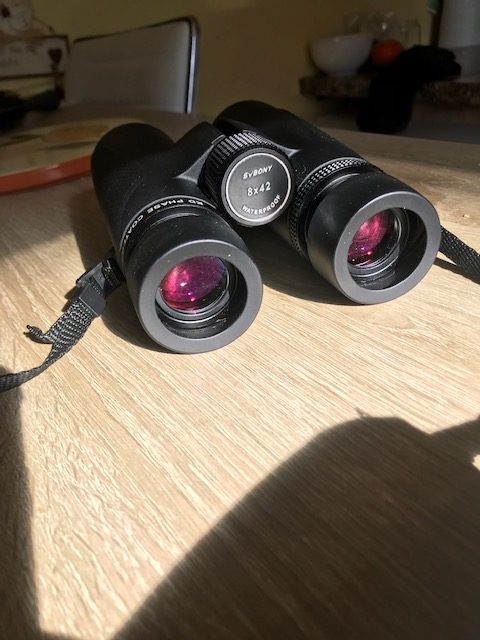
A Work Commenced May 8 2023
It’s been nearly two years since I first hit on the new high-performance Svbony SV202 ED binoculars. It was pure serendipity on my part; I was drawn to the list of features the 8 x 32 model possessed with an eye to discrediting the claims. Why? Because the price was simply too good to be true. I found out however that far from being marketing hype, these instruments delivered in spades, with excellent coatings, brilliant images and superb ergonomic construction. Thus far, I’ve tested all four models; the 8 x 32, 8 x 42, 10 x 42 and 10 x 50, but I settled on the newest addition to the series; the formidable SV202 8 x 42 ED; an instrument that has become one of my favourite field glasses in over five years of optical testing and evaluation involving hundreds of models across all price ranges. Indeed, I’d go so far as to say that these amazing instruments have set in motion an unstoppable revolution that’s bound to continue in the coming years, as European manufacturing enters a self-inflicted, suicidal death spiral owing to the wicked green agenda that is destroying industries for the sake of the pseudoscience of anthropogenic climate change. Our school teachers have become activists, brainwashing and indoctrinating our children with lies. There is no discipline and no boundaries. No wonder they’re so ill-equipped to cope with life in the modern world. It’s a recipe for disaster.. Our universities too are churning out ignorant, woke ‘graduates’ who simply can’t compete with the academic excellence coming from Chinese technological universities. They’d eat ours for breakfast. Small wonder, therefore, that Chinese optical quality is rapidly approaching the so-called alpha class of western-made binoculars. For me, the SV202 line of roof prism instruments are on the cutting edge of that revolution.
Optical Quality
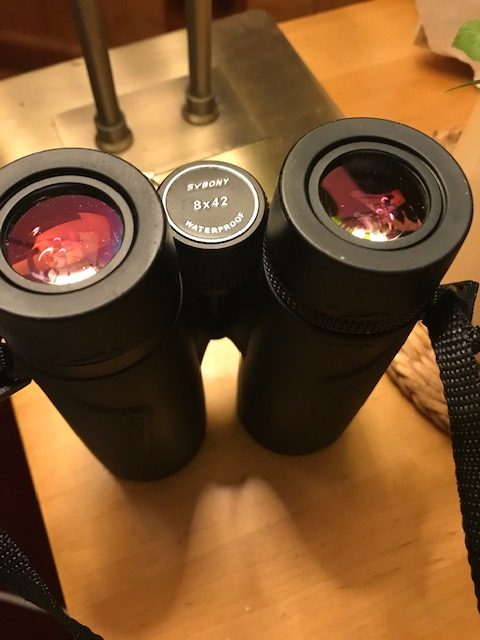
I’ve owned and used the SV202 8 x 42 ED now for about six months. It’s been a reliable companion in all weathers the Scottish climate can throw at you: rain and hail, snow and ice, wind and sun. My journals reveal that it’s clocked up about 100 hours of service. And in all that time it’s behaved flawlessly, delivering pin sharp images within a large sweetspot. Brightness and contrast are second to none. It’s sharper and better colour corrected than my Nikon E II 8 x 30- my favourite Japanese-made Porro prism binocular – and has served up some incredible views of birds, trees, hills, rivers, ponds, valleys, flowers, insects, and other wildlife. It’s got great close focus too at just over 2 metres, and exhibits superb control of internal reflections and glare. Indeed, the Svbony SV202 ED quickly became my control instrument when testing and evaluating many other roof prism models featured in my up-and-coming book. I’ve tested it against very high quality binoculars costing many times more, up to and including the likes of the Swarovski EL 8.5 x 42 and I’ve never felt like it was pulling much behind; it’s just that excellent!
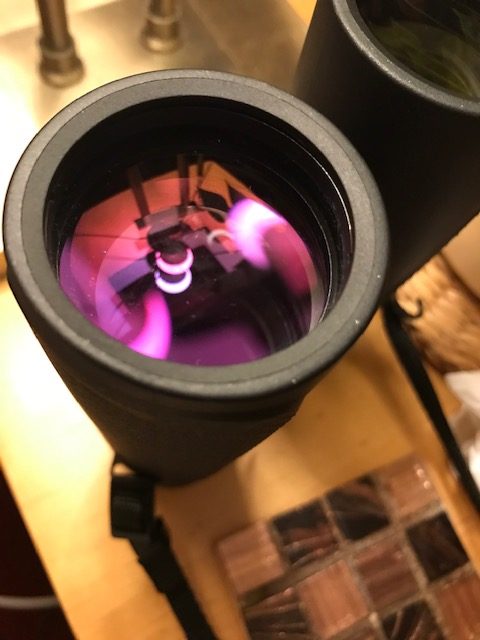
Ergonomic Excellence
The SV 202 8x 42 ED is, without a doubt, built to last. I was horrified by the response of some individuals on Birdforum who continuously expressed their doubts that such instruments simply couldn’t last the test of time. Such individuals are speaking in ignorance, of course, as they’ve never actually bothered to test these instruments out for themselves. I was particularly delighted to hear of one recent poster who decided to buy the 10 x 42 model out of curiosity as well as the excellent price with which they are now selling on sites like Amazon and AliExpress. He provided his honest opinion of it, reporting that it delivered 90 per cent of the image and build quality of his 10 x 42 Nikon Monarch HG. This was especially poignant given that the same individual bought the Svbony SV202 for just £70 with a coupon. The Monarch HG, in comparison, retails in the region of £1000 UK. He’s absolutely correct in making that claim; the Svbony wonder binoculars are really that good!
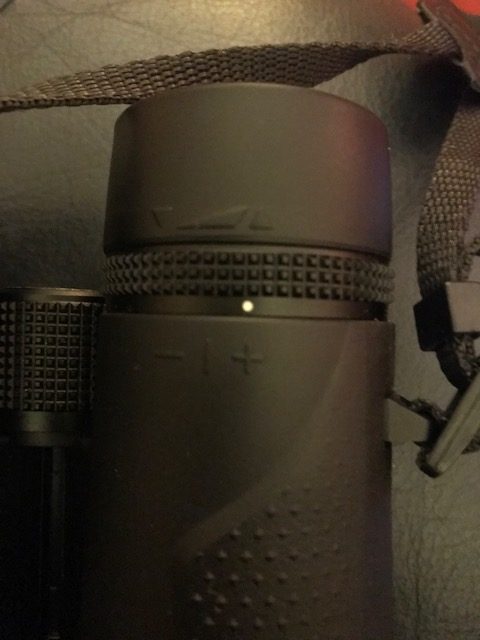
The instrument has a basic, no-frills design, with a sensibly located right eye dioptre compensation ring that has not budged one iota since I first adjusted it. It’s very tight; just set it and forget it. The focuser moves with silky smoothness and exhibits no backlash or free play. The multi-position twist-up eyecups are of identical quality to the Monarch HG and lock rigidly in place. They have never let me down. I’ve tested the instrument’s waterproof status(IPX7 rated) and it’s lived up to those promises.
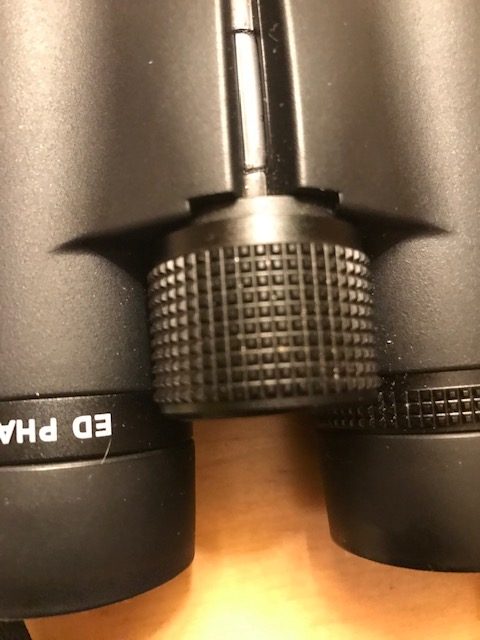
I’ve also observed on many occasions over the winter that it’s fog proof. Condensation builds on the outer lenses when brought in from the cold but the interior always remained bone dry. The excellent non-oxidising rubber armouring is possibly unique. It’s incredibly easy to grip and is an absolute pleasure to hold in my hands, weighing in at just over 700g. All in all, the 8 x 42 has been an absolute powerhouse of optical and ergonomic virtue, so much so that it’s the only full-size roof prism binocular I now use. Furthermore, I consider all European brands to be a profligate waste of money.
Roamin’ in the Gloamin‘
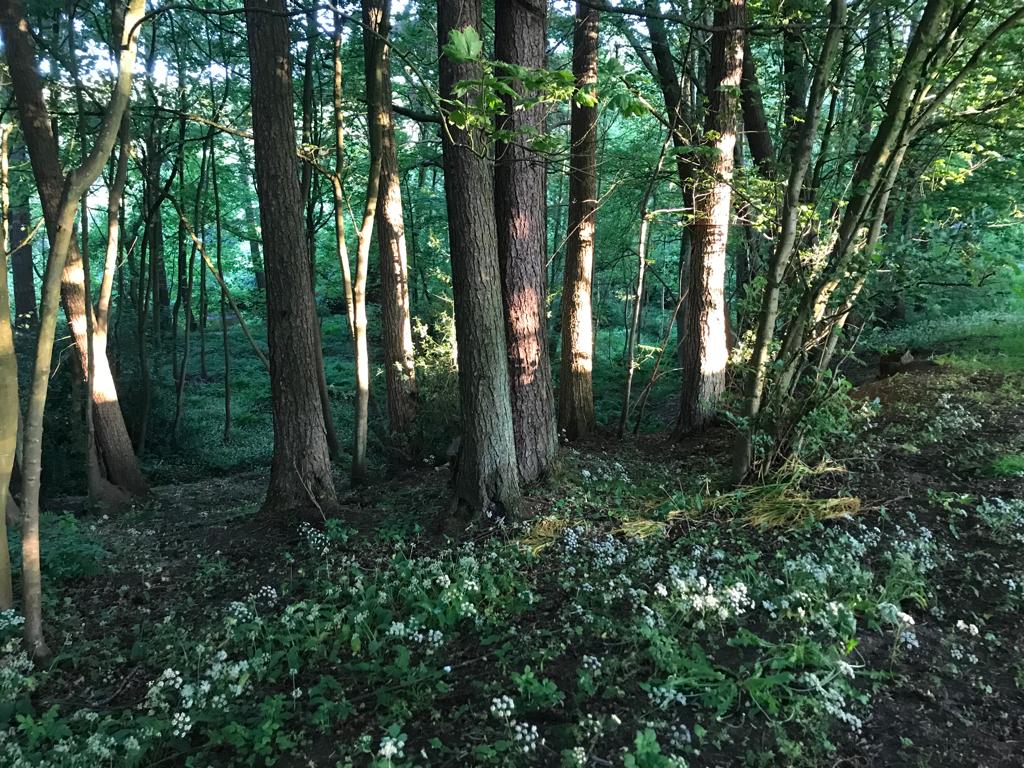
May 9
The evening light of May is arguably the most beautiful of the year. The setting Sun drenches the trees with their young leaves, creating spectacular light shows – known colloquially as the gloaming. The SV 202 8 x 42 ED is the ideal companion for soaking up the riot of detail in full view. Forests walks are especially thrilling, where I routinely glass busy Chaffinches foraging on the forest floor. The brightly coloured males are especially frisky this time of year. Indeed, I’ve seen them mating on many occasions over the last few weeks Like Robins, they’re quite at home with humans. Indeed I’ve been able to get within a few metres of many of them and use the 8x glass to admire their beautiful plumage. Their fearless nature endears me to them.
The spring rains cause dandelions to flourish in the more exposed parts of the forest and where they grow, colourful Goldfinches are never far away. Rarely do I observe these in isolation. Where there’s one, there’s usually two or three nearby. The males have bright yellow feathers on their heads, necks, and chests, while their wings and tail are black with white markings. Their backs are a light brownish-grey colour, and they have a distinctive black patch on their foreheads. The females, in contrast, have similar colouring, but their plumage is more muted, with less yellow on their heads and chests. I like to stand and watch them from a distance of about 5 or 6 metres, where the 8 x 42 provides exceptional views of these striking birds. Later in the season, they’ll concentrate on eating the seeds of thistles in the open fields around my home.
After heavy rain showers, the air becomes laced with the smell of wild garlic growing on the forest floor. Its leaves are ripe for the picking. We crush them into a fine paste with a pestle and mortar creating delicious salad pesto. It’s always worth while glassing these temporary explosions of green. Little Wrens are often found scampering among them, especially near burns that meander their way through the forest. Sometimes a sunbeam would break through when the wild garlic begins to glisten in the gloaming, its leaves drenched with life-giving rainwater. Such light shows are to be cherished, spectacles provided us by our Creator, the fountainhead of all that is beautiful and true.
Elon Musk is Everywhere!
May 10
I ventured out shortly after local midnight, May 10, to enjoy a few minutes under the stars. The 8 x 42 accompanied me on the vigil. Lyra and Cygnus had risen to a decent height above the northeastern horizon, Bootes was approaching the meridian and the Big Dipper loomed large nearly overhead. Scanning the sky with my 8 x 42 revealed some shocking results; nearly everywhere I pointed my binocular I could see a satellite racing through the field of view! “Elon Musk!” I exclaimed. His Star Link satellites are everywhere, changing the character of the night sky utterly and forever. I can’t imagine astro-imagers would be too happy with these developments. The visual telescopic astronomer; not so much.
Personally, I don’t mind it. It’s inevitable anyway; technological progress to be sure, linking up more people from every corner of the globe. Indeed, it’s even prophetic. I remembered the words of our Lord and Saviour Jesus Christ:
And this gospel of the kingdom will be preached in all the world as a witness to all the nations, and then the end will come.
Matthew 24:14
Musk’s armada of satellites will help bring the gospel to even the remotest people groups of the Earth, just as Jesus had foretold. Judging by the state of our world with all its wickedness and immorality, we’ve got to be close!
Comparing Instruments
May 14
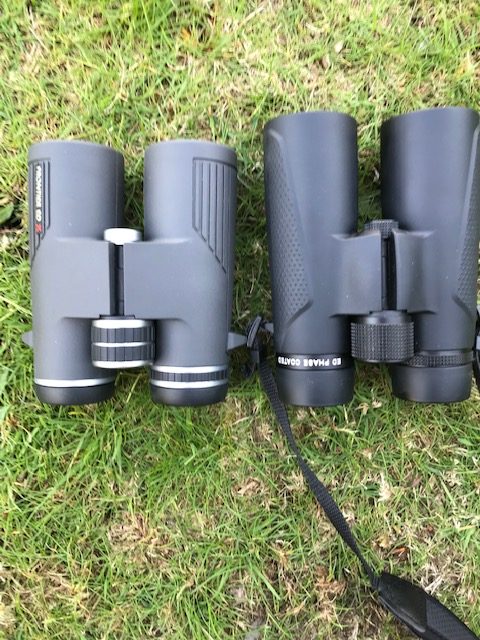
The afternoon of May 14 was grand and bright, allowing me to capture some images with my cell phone of the Svbony SV 202 8 x 42 and the Hawke Frontier EDX 8 x 42.The images are unprocessed and the same file size, so they’re quite comparable.

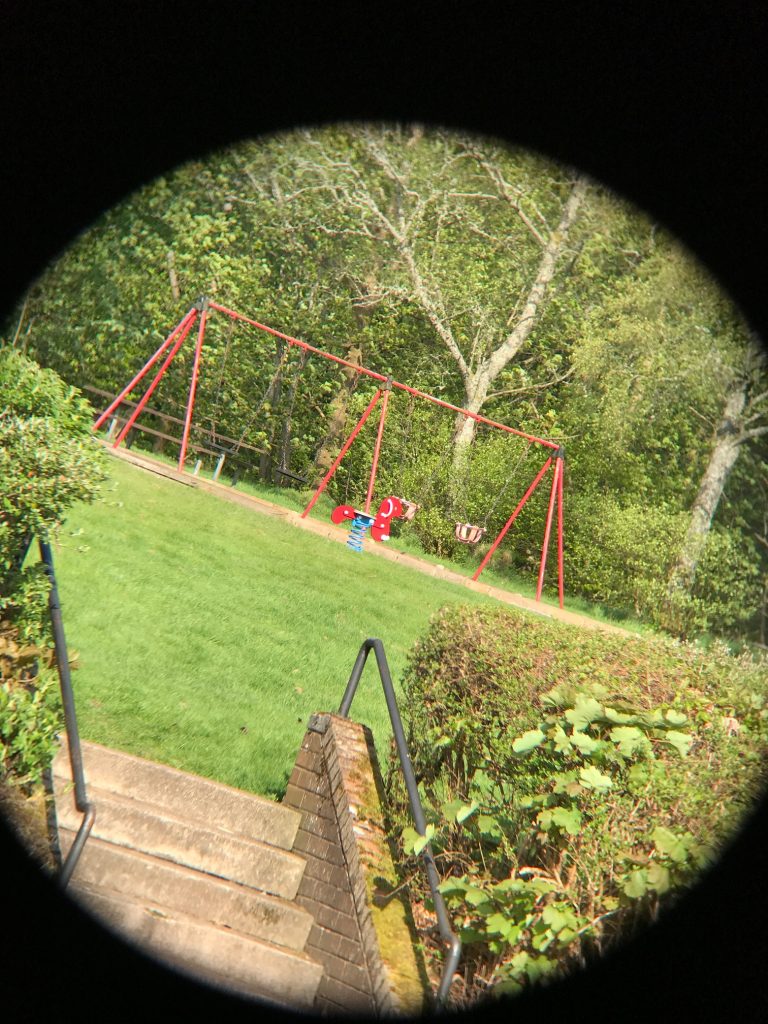
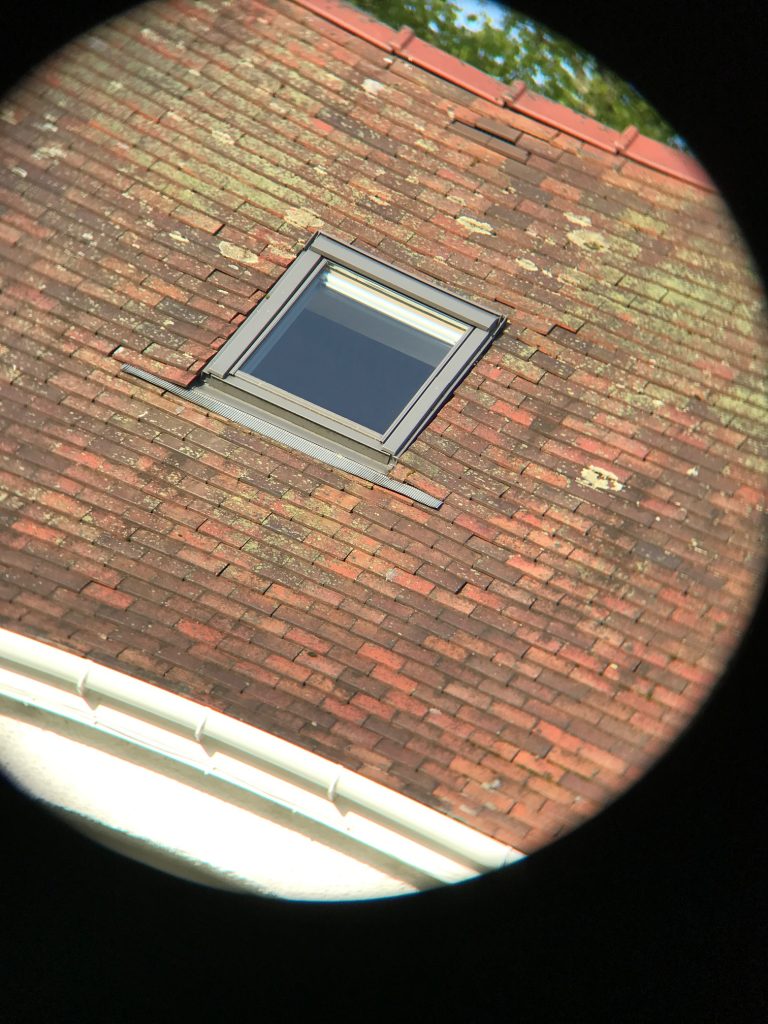
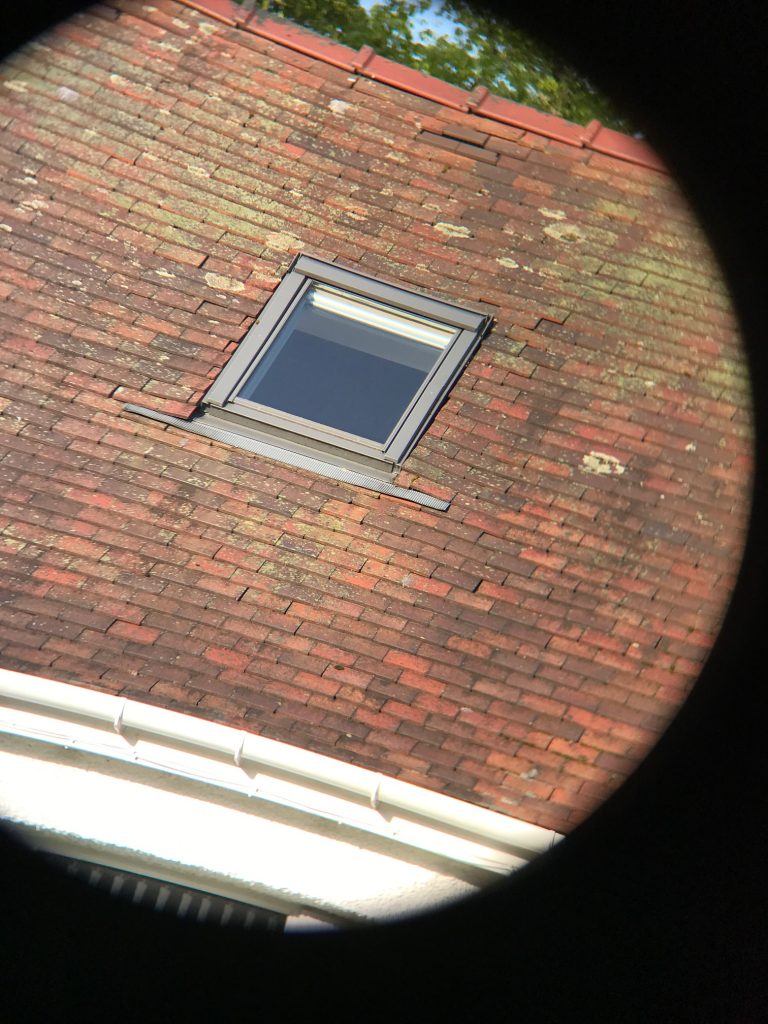
While the Hawke Frontier EDX 8 x 42 has a slightly larger field than the Svbony, I think you’ll agree that the images through both instruments are quite comparable. What’s more, the Hawke retails for about three times the price of the Svbony and has already garnered an excellent reputation from birders and binocular reviewers alike, so why not the SV202 also?
It just doesn’t seem fair to me!
The Hawke also suffers from more glare than the Svbony. And while it’s a very capable binocular, the Svbony glass is just as sharp and fits in my hands better. Just some of the reasons why I chose the SV 202 as my go-to mid-size roof prism binocular.
May 17
Observing at Dusk
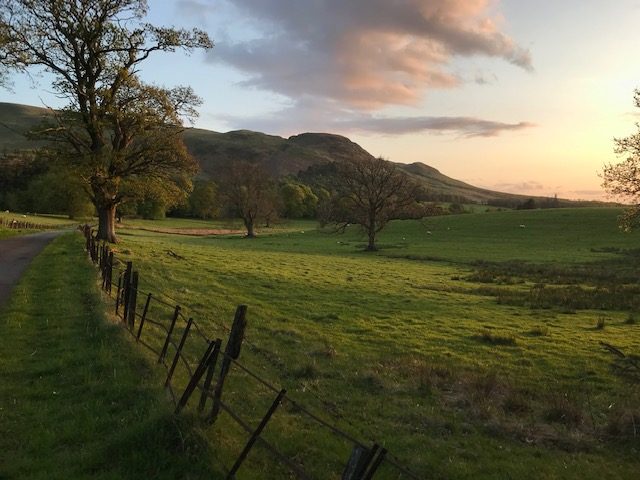
Now that I’m on my long summer vacation from teaching and writing commitments (yes, the first draft of my book has now been submitted), I’ve extended my glassing to later in the evening and sometimes well into dusk. This is when the benefits of a 5mm exit pupil really comes into its own. While I do most of my daytime glassing with smaller 8 x 30 and 8 x 32 instruments, their smaller aperture and smaller exit pupils limit the amount of detail you can see when the Sun falls out of the sky. This time of year, twilight encroaches, extending the time of dusk, enabling me to make use of the 8 x 42 SV 202 more extensively to watch for owls, badgers, deer and even the odd fox. Standing still under the cover of bushes, I’ve been enjoying watching badgers roam about in the gloom, sniffing the ground and uprooting plant tubers. One of the local farmers told me he has had lambs lost to badgers but is powerless to act because they’re protected under UK law. They seem quite cute to me but get in their way and they can unleash great ferocity with those powerful jaws..
I’ve tried other 5mm exit pupil formats for this kind of ‘on the move,’ low-light observing, including a 10 x 50 and a smaller 7 x 35, but neither of those cut the mustard compared with my Svbony. The former is too too large to carry about for extended periods and has too narrow a field of view to boot. And the latter doesn’t gather nearly enough light during these challenging lighting conditions. Moreover the 7x lacks the reach of an 8x glass. The 8 x 42 format, with its nice wide field, excellent light transmission and moderate weight, makes for the ideal tool for such activities.
May 28
Serendipitous Sightings
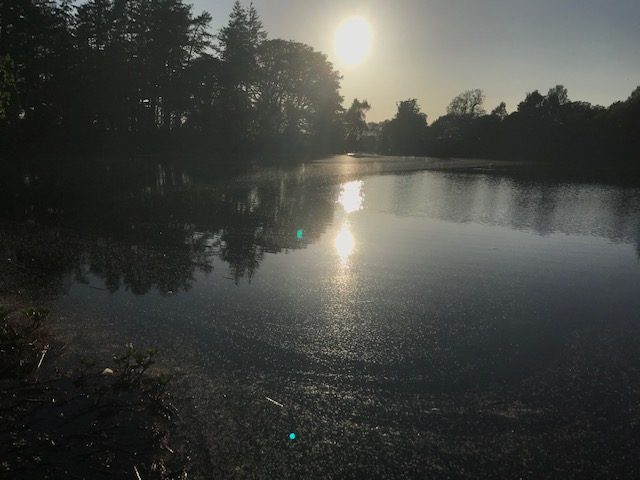
This is the height of the pollen season. The air is chock full of it from all the trees and bushes bursting into bloom, bringing misery to many hay fever sufferers. Thankfully, that’s not me. The surface water at Culcreuch Pond gets covered in a scum from it as it accumulates over the days and weeks. And it gets on everything -clothes, lenses, tripods, you name it! When you think of the amount of genetic and epigenetic information stored in these tiny structures, the mind boggles. It must be orders of magnitude greater than all of mankind’s digital code combined. The Lord God is a masterful designer!
On the evening of May 28, I took myself off again for a saunter up the country road towards Cuclreuch Castle. As a keen beginner birder, I’ve been learning where to scan with my binocular for interesting birds that might come into the area. One endlessly fruitful activity in this regard is to glass the fences on either side of the road. I’ve learned to scan them intently since many small passerines seem to rest there from time to time. This is where I’ve successfully spotted Goldfinches, Chaffinch, Stonechats, Robins and Wagtails, to name but a few species.
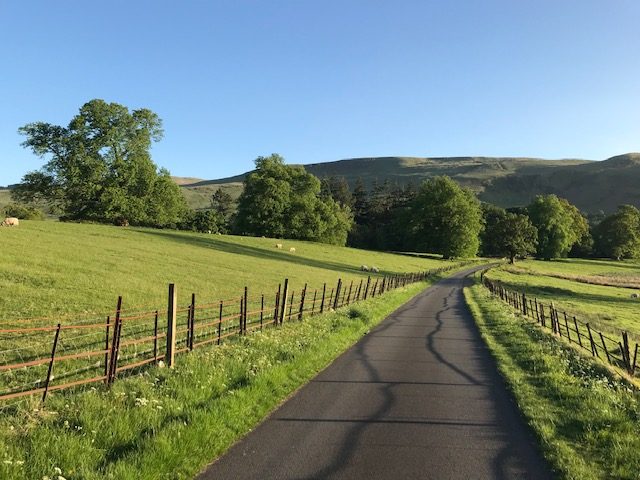
I had little luck this evening and turned to walk back towards the house. In the distance, I saw my eldest son and two of his mates approaching me, and stopped for a brief chat. But over their shoulder, I saw a small bird, no bigger than a Robin fly in and land on the fence about 30 yards in the distance. I quickly brought my SV 202 to my eyes and noted its colours, which were very easy to discern, as the setting Sun strongly illuminated it. At first glance, I thought it was a male Bullfinch, but there was something distinctly odd about it. Yes, it had a bright orange belly and flank, but its beak was long and slender, not muscular like most finches I’d observed. Its lower head was jet black but above its eyes it was white with a grey cap, and bluish grey wings. Excited, I asked the boys to quieten down as I took another steady look. This was a bird I’d never seen before but I memorised its appearance as best I could. And I had no idea what it was until I got home and leafed through my RSPB book. Finally, there it was in all its glory on page 263; a beautiful male Redstart! The first of its kind I had ever seen!
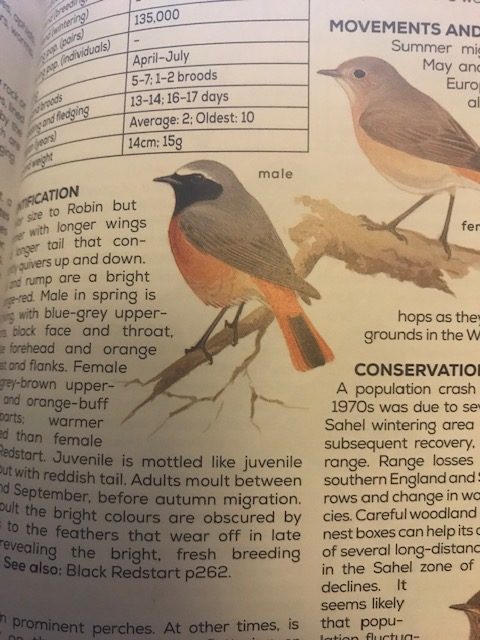
As I later reflected on the the sighting, I realised just how lucky I was to get a glimpse of this summer migrant to the British Isles, amber-listed in the handbook. Apparently they are more common in Wales and the West Country, but the accompanying map illustrating its distribution also showed that some sightings have been made here, just north of the Scottish central belt.
When it comes to birding, you make you’re own luck.
Chance favours the prepared birder!
Sodom 2
Cities & Towns Are No-Go Areas
The wicked month of Sodom is now upon us and that means one thing for me. I avoid the cities and big towns where they ‘celebrate’ these depraved lifestyles. I refuse to enter any premises flying the rainbow flag and give them no business. There will be all sorts of lude behaviour at these gatherings; drink and drug-fuelled orgies, men pretending they’re women and women pretending they’re men, and chemically castrated children, not to mention a complicit general public pronounced guilty(in the eyes of a holy God) by association. Monkey pox, herpes and other STDs will be spreading. As the Bible teaches:
I will set nothing wicked before my eyes; I hate the work of those who fall away; It shall not cling to me.
Psalm 101:3
Redstarts
Since my first sighting of the male Redstart, I’ve since glassed it several more times, and always in the same location; at the top of the castle drive before the pond and between two great oak trees. Methinks it’s rearing young and that requires a female. I’ve tentatively made one observation of a possible female(mate). I spotted a small bird, rather like a Robin, but without its intense red breast. At this stage I can’t be sure though.
The SV202s Going from Strength to Strength

I took a look over at Amazon this afternoon to see how the SV202s were doing. I’m delighted to report that there are now 80 reviews; a huge increase over the last time I looked with an average score of 4.5 stars out of 5! I’ve said it before and I’ll say it again; these are amazing binoculars! Indeed, it’s really all you could possibly want in a roof prism binocular.
The notion that you can’t get excellent ergonomic and optical quality at a price that is now affordable to many. Why pay more? These instruments will grow the hobby, allowing many more folk to get out and enjoy the creation, in all its glory!
Sodom 14
A Redstart Family
Since first sighting the male Redstart at the top of the castle drive, I’ve now observed it many more times since. Indeed, on almost every evening I take a walk there I catch a glimpse of it. What’s more, I’ve also spotted a female, with its more subdued colours. The clincher for me was identifying their nest site – a grand old oak tree. That comports nicely with the details given in the RSPB handbook which states that they indeed like to nest in oak trees. They’re incredibly graceful birds, being capable of hovering in mid-air in search of insects. I’ve often seen them foraging in the grassy kerbs at the side of the road, just like Goldfinches.
Discovering these birds so close to my home inspired me one afternoon to set up a spotting scope to study them in more detail and to maybe capture some images of these handsome creatures. I’ve been test driving a really nice spotting scope manufactured by Svbony; the SA405, an 85mm ED model with a zoom magnification range from 20x 60x. It works like a dream, delivering crisp images throughout the zoom range. While you really don’t need ED glass below about 30x, it sure does help reduce colour fringing beyond these powers. I’ve been very successful getting great close up visual views of both the male and female Redstarts, but imaging them is an entirely different matter. Because the CCD camera has a larger image scale than even the 60x setting on the zoom eyepiece, its more challenging to get the birds centred on the CCD chip. What’s more, these highly-strung birds never stay put for long; once you think you’ve got them framed, they fly off making the whole enterprise an exercise in frustration more than anything else.

Consistency
My up-and coming book on binoculars has given a well-deserved pride of place to the SV202 ED binoculars. While reflecting on their success, I realised that they all seem to have excellent control of internal reflections; right up there with the very best European models in fact. Take the appearance of the exit pupils, which I’ve photographed in the past as part of my reviewing work. Here they are again for interest:
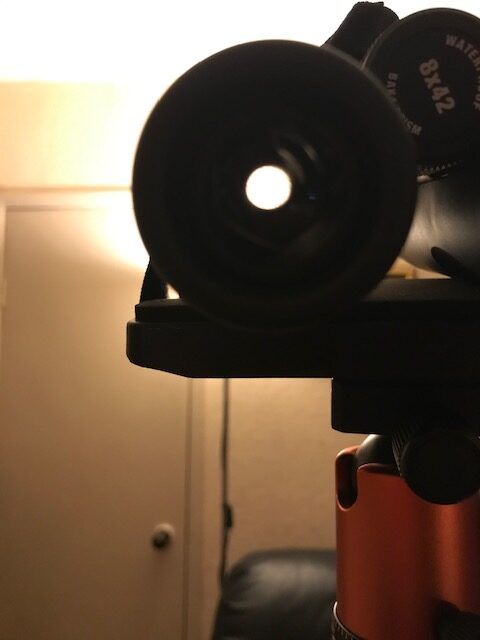
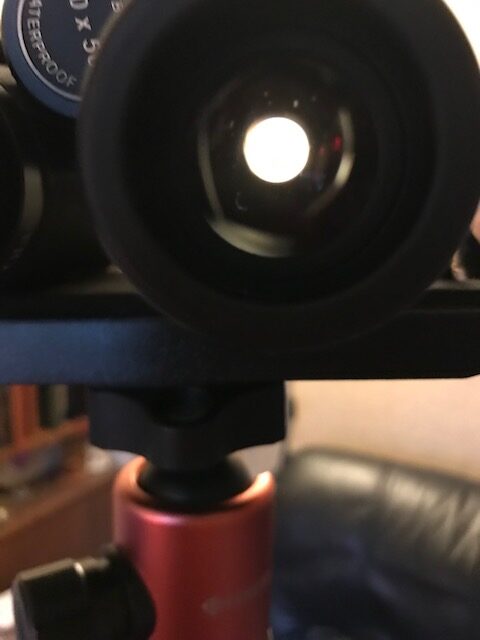


Now, that’s what I call consistent!
Good round pupils with an extensive area of darkness surrounding them. And no false pupils either!
Sodom 25
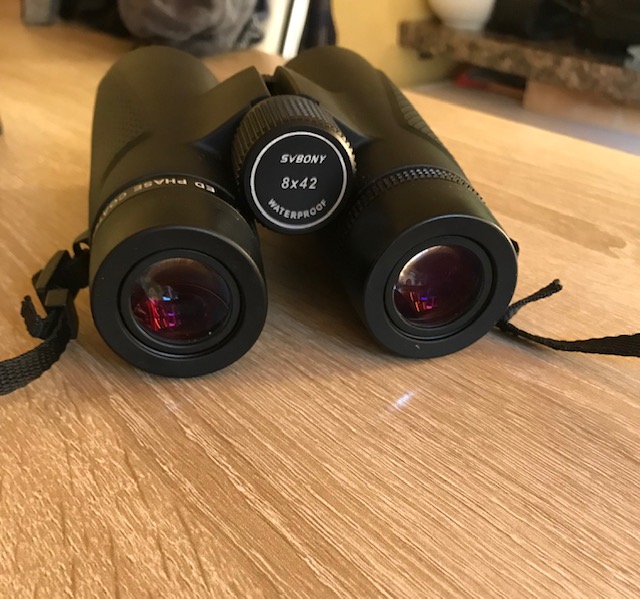
Horses for Courses
Though I’m a big fan of high-quality Porro prism binoculars, there are tasks that roof prism binoculars just excel at. One of these is comfortable close focus ability. I say ‘comfortable’ because although my beloved Nikon E II 8 x 30 actually focuses closer than my SV 202(1.95m versus 2.2m), glassing anything closer than about 5 or 6 metres is quite uncomfortable in the E II, necessitating an adjustment of the interpupillary distance downwards below my natural 65mm. In contrast, the SV202 delivers images that are much easier on the eye. This advantage really comes into its own viewing small birds at close distance, such as Willow Warblers and Treecreepers. My experiments in forests with both roof and Porro prism binoculars have also compelled me to favour the former over the latter in such environs.
Seeing the Light
The images served up by the SV202 8x 42 are very bright and sharp. I’ve compared it side-by-side with much more expensive binoculars with high(~90 per cent) light transmissions and have failed to see any significant differences in low light conditions. When I first began my binocular studies, I often came across statements which claimed that binoculars with ED glass deliver brighter images and words to the effect of, “the ED glass gives you an extra five minutes when the light really begins to fade.” Now, I’ve compared models of exactly the same specification, with one having ordinary crown-flint glass and the other possessing an ED element under rigorous low light tests and not noticed any differences. I wondered where this false meme originated from, since there is always a grain of truth to most of these ideas. It was after studying some of the physics of Augustin-Jean Fresnel(1788-1827) that I got a lead. His equations provided important advances in computing how much light is transmitted and reflected with materials possessing different refractive indices.
Many of the Fresnel equations are quite complex, as they involve light incident upon a surface at different angles. Let’s look at one particular equation:
R = Cos x – (n2 – sin2x)1/2/Cos x + (n2 – sin2x)1/2
Where R = the amount of reflected light from an optical surface
x = the angle of incidence and n= the refractive index of the material.
We can simplify this greatly by considering light arriving directly along the normal( i.e. looking at the centre of the lens head-on, so x =0), from which we obtain the much simpler equation:
R= [1-n/1+n]2
So the amount of reflected light only depends on the refractive index of the optical glass used. Now consider regular crown and flint glass having a refractive index of about 1.5. The amount of light reflected off such glass for normal incidence is
R = [1-1.5/1+1.5]2 = 0.04
Note: This is the origin of the 4% figure often quoted in telescope optics texts for uncoated glass.
Next consider extra low dispersion (ED) glass like fluorite or FPL 53 or some such, with a refractive index of 1.44. Plugging this number for n into the Fresnel equation delivers a value of 0.03 or 3 per cent.
This means that regular crown or flint glass transmits 96 per cent of the light incident upon it compared with 97 per cent for ED glass.
This is a very small difference but considering that only one or two elements in the optical train employ ED glass, and the applications of multiple layers of antireflection coatings further reduce the light losses for both types of glass, the visual difference in brightness will be all but indistinguishable.
So there you have it! Although the Fresnel equation allows for a one per cent difference in transmission, it amounts to effectively negligible differences in overall transmission, all other things being equal.
Don’t believe the hype!
To be continued……………..
Thank you for your intriguing review, Neil!
I must admit, I wish I had come across your review four days earlier, as I recently ordered the Pentax Papilio II 8.5×21 based on your recommendation. These binoculars will be my very first, purchased specifically for my upcoming British Isles cruise starting this Sunday. As a novice, I’m unsure if I made the right choice after reading your latest review, but I suppose such uncertainty is to be expected. Now, I find myself strongly tempted to acquire these SV202 ED binoculars you mentioned. 🙂
On another note, I had a sudden idea… Would you kindly consider putting together a brief course on binoculars, along with the fascinating activity of bird watching amidst the breathtaking Scottish nature? My better half and I will be docking at Newhaven Edinburgh on Tuesday, the 4th of July, from 7:00 AM to 6:00 PM, before our next stop in Inverness (Invergordon) on Wednesday, the 5th of July.
Warmest regards,
Tanel
Good evening Tanel,
Many thanks for your message and a warm welcome to Scotland.
My up-and-coming book will cover a lot of ground on binoculars, mostly set in the Scottish landscape.
Enjoy your little Papilio!
With best wishes,
Neil.
Dear Neil,
Thank you for your warm welcome and prompt response.
I’m glad to hear that your upcoming book will delve into the world of binoculars, especially with the backdrop of the Scottish landscape. I’m sure it will be a fascinating read.
As for the Papilio binoculars, I must say they have been quite enjoyable to use during my trip so far. They have proven to be fantastic for observing food, paintings, and other objects at a micro level, offering a unique perspective on the finer details. However, I had the opportunity to compare them to the Leica Trinovid 10×42 HD binoculars available on the ship, and I must admit, the Leicas are truly amazing and they outshine the Papilios, particularly in far focusing capabilities.
Since you have extensive knowledge in this field, I wanted to ask if you have tried the Leica Trinovid 10×42 HD binoculars and how they would compare to the Svbony SV202 8×42. The Leicas left a strong impression on me, but their price tag of $1000 USD is beyond my budget. I’m curious to know if I can expect a similar level of performance from the Svbony SV202 8×42 binoculars.
Once again, thank you for your time and assistance.
Best regards,
Tanel
Good Evening Tanel,
Hope the vacation is going well. The weather has been rather poor these last few days but is expected to pick up towards the end of the week. June was quite simply glorious!
I’ve not tested the Leica Trinovid HD 10 x 42 but did own the smaller 8 x 32 model for quite some time. They have wonderful build quality with very nice optics. That said, The Svbony SV202s are just so hard to beat at a much lower price point. I would advise trying the Svbony first and if you’re satisfied with it, you’ve gained a great bargain. If you buy from Amazon, you can return it for a full refund and consider another model. The Leica will have similar central sharpness and slightly warmer colours, IIRC, but I did experience some blackout issues i.e. kidney beaning with the Leica which i did not with the SV202s.
Hope that helps and thanks for the warm thumbs up on the up-and-coming book.
With best wishes,
Neil.
Dear Neil,
I appreciate your valuable advice. I’ve already placed an order for the Svbony SV202 8×42 binoculars on Aliexpress and I’m eagerly awaiting their arrival. Additionally, I’m contemplating the possibility of acquiring the Nikon E II 8 x 30 or Nikon E II 10 x 35 binoculars, preferably at a reasonable price, even if they are used but in good condition.
On the vacation front, things are going well. Edinburgh had some rainy days, but Invergordon blessed us with mostly sunny weather.
Best regards,
Tanel
Dear Tanel,
Very glad to hear the trip’s going well.
Aaah… the Nikon E IIs…………sublime!
With best wishes,
Neil.
Dear Neil,
I must say, your description of the Nikon E II binoculars is quite enticing. They sound incredibly impressive. If you happen to come across any good deals on used Nikon E II-s, I would greatly appreciate it if you could refer them to me. I trust your expertise and judgment when it comes to binocular recommendations.
Warmest wishes,
Tanel
Thanks Tanel,
The EIIs are very special. For me they were the binoculars to end all perosnal binocular purchases. I’m sated.
They are still available here in the UK but are rather expensive of late, but you can get much better deals if you live in places like the US.
If you come across one on eBay in used condition I’d make sure they are free from any dust or fungus in the interior. Most should be fine as they have only been around twenty years or so, and most owners tend to baby them a little.
Happy hunting!
Neil.
Dear Neil,
I noticed that there are some lovely Leica Trinovid 10×25 binoculars available on the ship, and I happen to have a small ship credit that I could use towards them. This would bring the price down to around 300 EUR for the pair. I remember reading your review of the 10×25 Leica binoculars, but I understand that it was from 2020. I also recall your review of the Ultravid 8×20 model. I’m curious to know if you are still using and enjoying the Leica 8×20 and 10×25 binoculars, especially since you recently mentioned that your favorite binoculars are the Nikon E II 8×30 and Svbony SV202. Considering that I already have plans to acquire the Nikon E II 8×30 binoculars and the SV202 8×42 is on its way, would it be advisable for me to also go for these 10×25 Leicas?
Best regards,
Tanel
Dear Tanel,
These days I hardly ever use pocket binoculars since I moved up to 8x 30/32mm formats. I did spend a year using almost nothing other than a Leica 8 x 20 Utltravid. It was an enjoyable experience that taught me a lot. Ultimately though, it left me a little unfulfilled.
The majority of the binoculars I use routinely are Porro prism designs. I also use the Svbony SV202 8x 42 ED.
Binoculars are like shoes; one size doesn’t fit all. The ones I enjoy may not be what others enjoy. They are highly personal to each individual.
Regards,
Neil.
Hey Neil!
Just wanted to give you a quick update—I ended up buying the Leica Trinovid 10×25 binoculars, and I have to say, I’m really impressed with their clarity and lightweight design. They’re a joy to use! However, I’m also planning to get the Nikon E II 8×30 binoculars soon. Once I have a chance to compare them, I’ll make the final call on whether to keep the Leicas or not.
Take care and happy observing!
Best regards,
Tanel
Your right about the shoe analogy. For me its been the heavier the better. Although I really liked the Opticron 8×32 Adventurer TWP, I found the heavier Svbony 202 10×42 steadier in my hands. I now have the Nikon Action EX 10×50 and find it I am using it for day and night viewing. Maybe that Oberwerk 10x42s ED poro you reviewed could be the One Binocular to Rule them All.
Hi Neil,
Do you happen to have a chance to look through the new Nikon M7 8×42 or Bushnell Forge 8×42 ? I can get them around $350 USD from a local seller. what do you think compare them to this svbony? I recently bought a svbony 10×42 and just like you said , they’re great for the price. Thank you.
David
Hello David,
Thanks for your message.
Both the Nikon M7 and Bushnell Forge have a lot of nice features. I’ve looked through the smaller M7 8 x 30 and was quite impressed but not the larger model. No direct experience of the Bushnell Forge either.
I would say that the Svbony SV 202 8x 42 would be quite comparable to these instruments and may have a little bit better central shrapness. From my own experience with the GPO Passion ED and Hawke Frontier EDX 8x 42s, I can say that the Svbony is that little bit sharper than the GPO and runs neck and neck with the Hawke.
If you’re after an 8x 42, I’d be inclined to test drive the 8 x 42 Sybony first. It might be all you want and save you a considerable amount of money.
Hope that helps,
Neil.
thank you so much for your reply. I will try svbony first then.
Good luck with that David,
Neil
Hello Anderson,
The SV202 8 x 32 only weighs about 500g. My one measured 510g.
Regards,
Neil
Greetings,
Your articles regarding the SV202 variants leaves me wondering which one I should try since I have a limited budget. I wanted something smaller (preferably 10x) carry on walks but then saw your review of the the 10×42 and 8×42 , which has me reconsidering what the best option would be. Views on walks are usually at distance but might sacrifice some of power a 10x if the 8×42 is as good as stated. Any thoughts you might have would be welcome. Thanks!
Hello Lucian
Many thanks for your message. I think the SV 202 8 x 42 is the best from this series. It has nice optics and is well built and durable. If you hold out and save some money I think the new Sky Rover Banner Cloud 8 x 42 – a new binocular on the world’s stage that is causing quite a stir – might be a great investment. I should receive the instrument this week sometime, so stay tuned for a full review!
Best wishes,
Neil
Hi Neil,
Thank you for your reply. I will looking forward to your review.
Hi have you tried the Svbony 205 ED flat field binoculars yet? I was wondering how they might compare the Sv 202 ED
Hey Neil,
Hope you’re well. I have been looking over your various posts about the SV 202 8 x 42, would you say these are still up there even a few years down the line for an entry level binocular? I am looking for a decent pair of binoculars to take on hikes, in the van (and Safari in the near future).
I was looking at Opticron and Viking, but from various articles and forums the Svbony seem to get a real good reputation.
Any advice greatly received.
Thanks,
Holly
Hi Neil
I finally sent for the sv202 8×42 and it arrived yesterday from Amazon… a couple of years ago i looked at the sv202 10×42 & 10×50 but decided to return both after a thorough field test which left me quite underwhelmed.
I’m pleased to report that after an initial brief inspection of the 8×42 model i feel much more excitement about this afternoon’s excursion into the Cambridgeshire countryside accompanied by the 8×42’s…
I’ll let you know what my findings are..
Best wishes
Paul
Hi Paul,
Thanks for letting me know.
Best wishes,
Neil
Hi Neil
I’ve submitted a review for the phenomenal SV202 8×42 over on Amazon… it’s that good!
What a revelation….
Thank you
Paul
Hi Neil
I’ve just submitted a review for the phenomenal SV202 8×42 over on Amazon… it’s that good! Who would have thought…I’m extremely happy with it for £111… incredible instrument!
Thank you
Paul M
Hi Paul,
Delighted to hear you’re happy with it. I think the 8x 42 model is the best of the series. It gave me a very solid start in the hobby and still recommend it highly to folk.
I hope you get many years of service out of it.
With best wishes,
Neil.
Hi Neil
There is a new upgraded version of SV202 binocular… i have just placed an order on Amazon… for the upgraded 8×42 model which apparently boasts an impressive wide field of 8.1, looking forward to field testing these in the very near future.. I confess to being an incurable binocular addict..!
Yours optically
Paul
Hi Paul,
I think you’ll like the new changes to the SV202 8 x 42.
Let us know how you get on!
Best wishes,
Neil